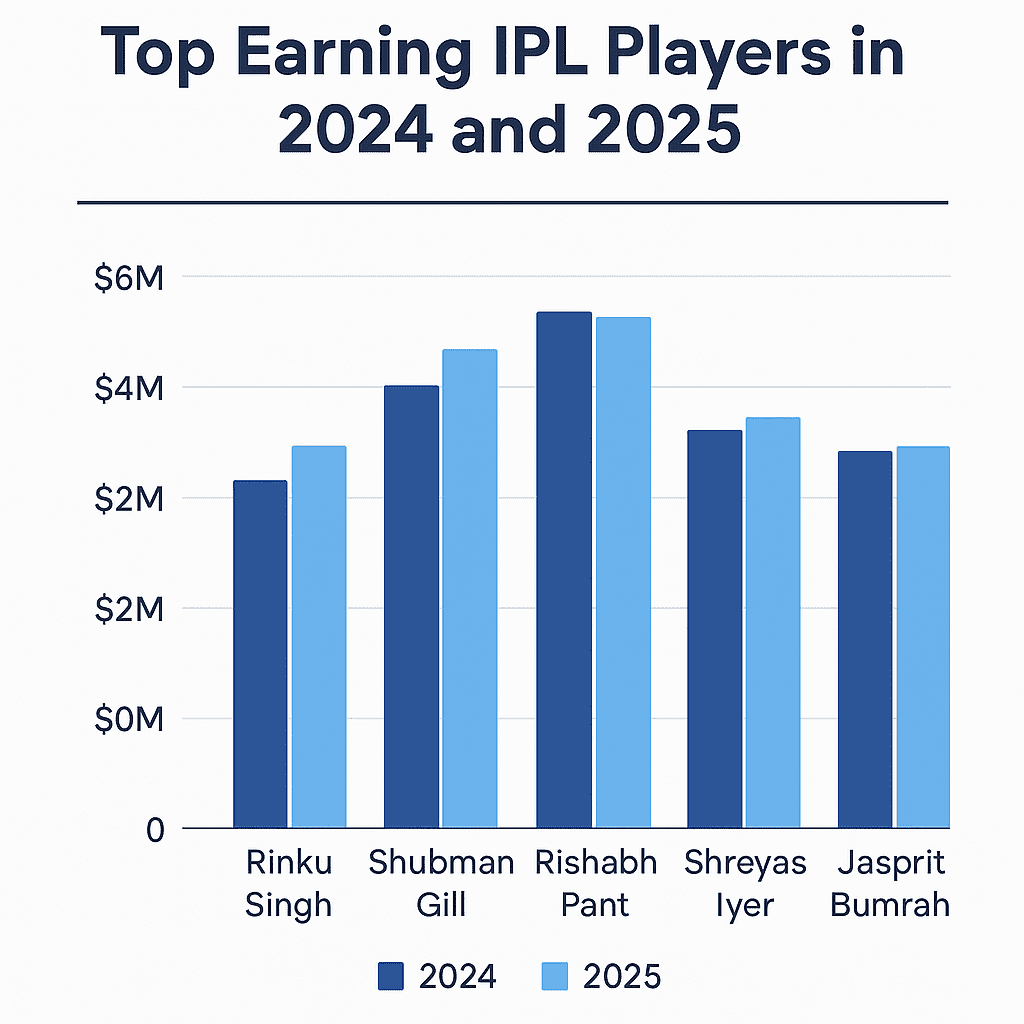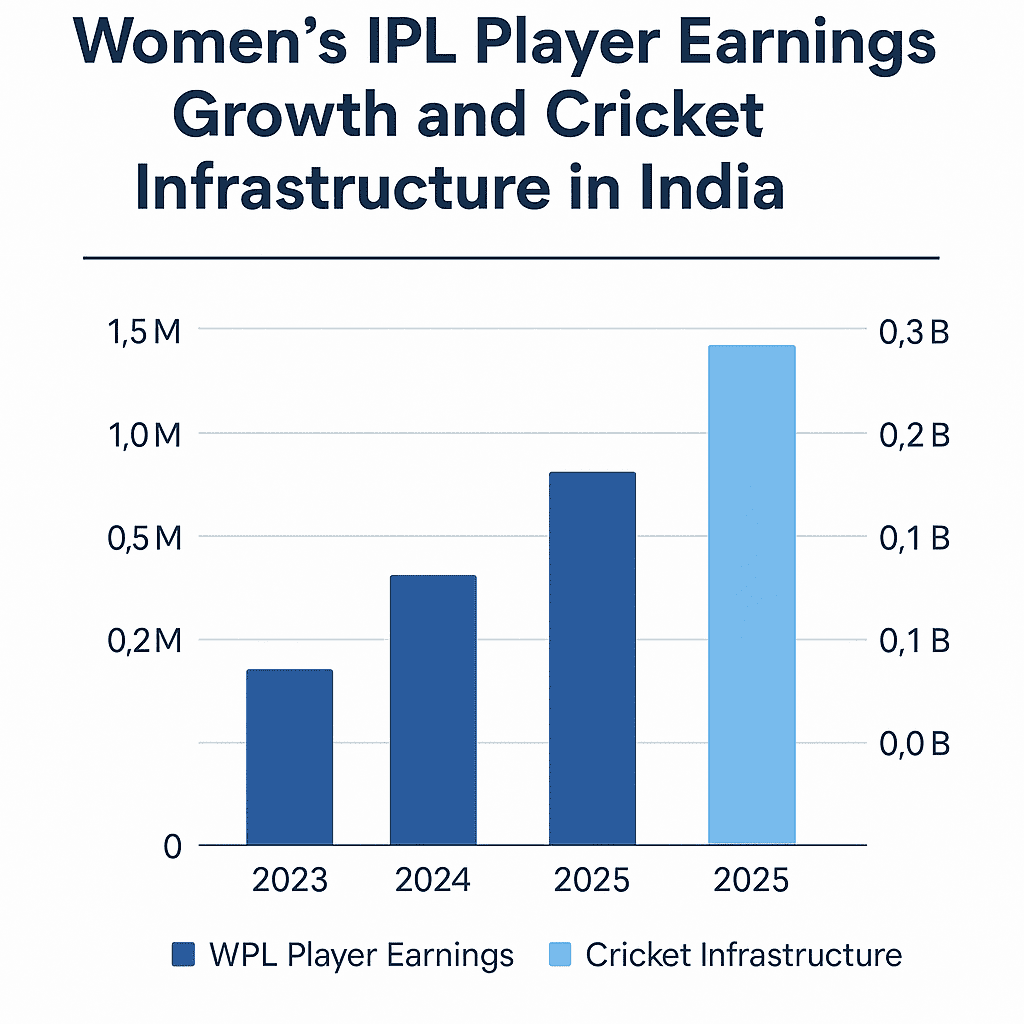
How IPL is Driving Financial Growth and Development in Indian Cricket
Introduction
The Indian Premier League (IPL) has emerged as the most influential cricket league globally, not just for its entertainment value but also for the massive financial impact it has created. The IPL has become the backbone of Indian cricket’s economic success, contributing to the financial development of the BCCI, Indian government, state cricket boards, and players. With a dedicated fanbase and exponential viewership across the world, IPL has established itself as a powerful driver of sports business and infrastructure growth. This article explores how IPL is financially transforming the landscape of cricket in India and contributing to the growth of the Indian economy, particularly through the years 2024 and 2025 IPL financial growth.

- BCCI’s Financial Revolution Through IPL
The Board of Control for Cricket in India (BCCI) has seen unprecedented financial growth through the IPL. The IPL 2023 season alone generated a record-breaking revenue of over ₹11,769 crore. The media rights for 2023-2027 were sold for a staggering ₹48,390 crore, showcasing the brand value of IPL globally.
In 2024 and 2025, BCCI continued its financial dominance with newer sponsorship deals, a surge in digital streaming rights, and global broadcasting partnerships. Companies like Viacom18 and JioCinema have invested heavily in digital rights, enhancing BCCI’s revenue model.
Notable Developments in 2024-2025:
- BCCI’s annual revenue crossed ₹16,000 crore by mid-2025.
- Partnerships with global brands like Google Pay, Mastercard, and Tata Group for title sponsorships.
- Investment in developing 10 new high-performance cricket centers across India.
BCCI uses this revenue for:
- Developing cricket infrastructure across India
- Funding domestic cricket tournaments
- Providing financial assistance to state associations
- Enhancing grassroots cricket programs
- Promoting women’s cricket development
- State Cricket Boards: Infrastructure Development and Talent Nurturing
Every state cricket association in India benefits directly from IPL revenue sharing. These funds have allowed state boards to:
- Build world-class stadiums
- Set up cricket academies
- Improve training facilities
- Organize state-level tournaments
- Provide financial support to young and aspiring cricketers
Recent Developments (2024-2025):
- New cricket stadium projects launched in states like Uttarakhand, Gujarat, and Odisha with budgets ranging from ₹500 crore to ₹1000 crore.
- Technology-driven cricket academies introduced in Karnataka and Mumbai, including AI-powered performance analytics tools.
- Increased focus on women’s cricket infrastructure following the success of the Women’s Premier League (WPL), including exclusive training centers for female cricketers in Delhi and Chennai.
- The Indian Government: Tax Revenue and Economic Boost
The IPL significantly contributes to the Indian government’s tax revenue through:
- GST on ticket sales
- Income tax on player earnings
- Corporate taxes from franchises and sponsors
- Employment generation in hospitality, tourism, and media sectors
Developments in 2024 and 2025:
- The Indian government earned over ₹12,000 crore in direct and indirect taxes from the IPL ecosystem.
- Enhanced sports tourism during IPL seasons with host cities like Ahmedabad, Lucknow, and Hyderabad witnessing 70% hotel occupancy increases.
- Growth of small businesses around IPL venues, boosting the local economy and creating more than 2 lakh jobs seasonally.
- IPL Players: Financial Security and Career Growth
For Indian and international players, IPL has been a life-changing platform. In the 2024 auction, players like Shreyas Iyer and Rishabh Pant secured deals worth over $3 million each. Benefits to players include:
- High auction salaries
- Endorsement deals
- Brand collaborations
- Financial security for life
Developments in 2024-2025:
- Emerging talents like Rinku Singh and Yashasvi Jaiswal became brand ambassadors for major companies.
- Women cricketers receiving significant contracts in WPL 2024 and 2025 auctions, with Smriti Mandhana earning ₹14 crore in 2025.
- Players investing in startups, fitness brands, tech ventures, and sports academies using their IPL earnings.

- IPL’s Role in Global Cricket Economy
The IPL model is now being adopted by other cricket boards across the globe. Leagues like PSL (Pakistan Super League), BBL (Big Bash League), SA20 (South Africa), and The Hundred (England) have followed IPL’s blueprint, proving India’s leadership in the global cricket economy.
Developments in 2024-2025:
- IPL franchises acquiring teams in international T20 leagues (ILT20, CPL, SA20), expanding their global footprint.
- Indian companies investing in global cricket properties, further strengthening India’s dominance in cricket economics.
- IPL broadcast rights reaching over 190 countries, making it a truly global sporting product.
Conclusion
The IPL has revolutionized not only cricket but also the sports economy in India. It is a prime example of how sports can contribute to national economic development while nurturing talent. The league has brought financial prosperity to BCCI, state cricket boards, the Indian government, and players. As the IPL continues to grow, especially with developments in 2024 and 2025, its positive impact on Indian cricket and the economy is set to reach even greater heights. Going forward, IPL is poised to influence other sports leagues in India, shaping a golden era of sports business and infrastructure development in the country.






Add comment